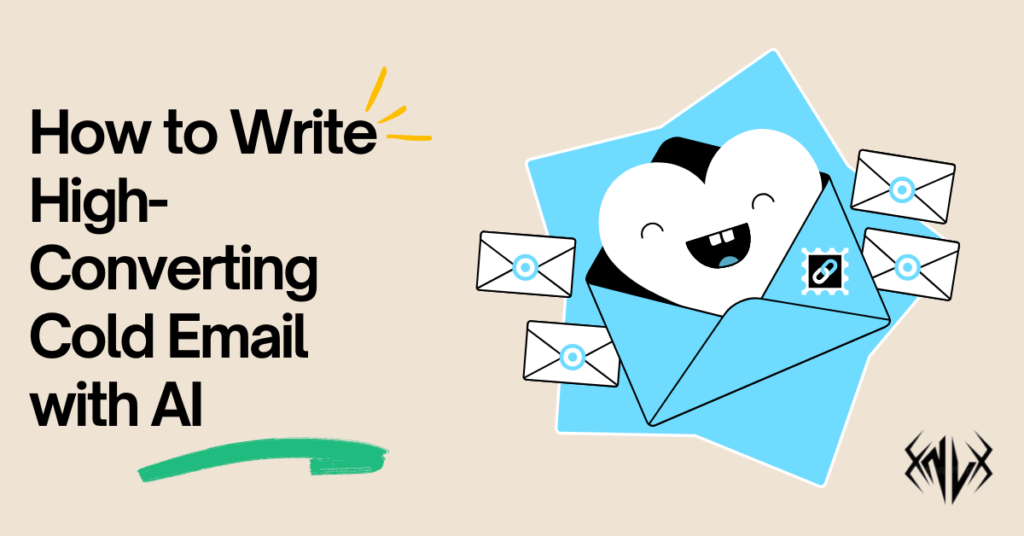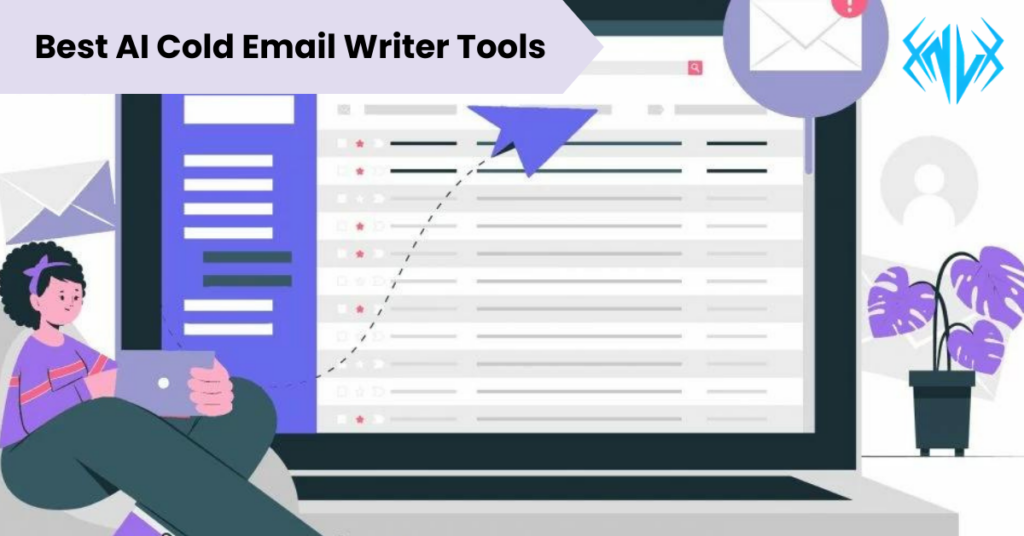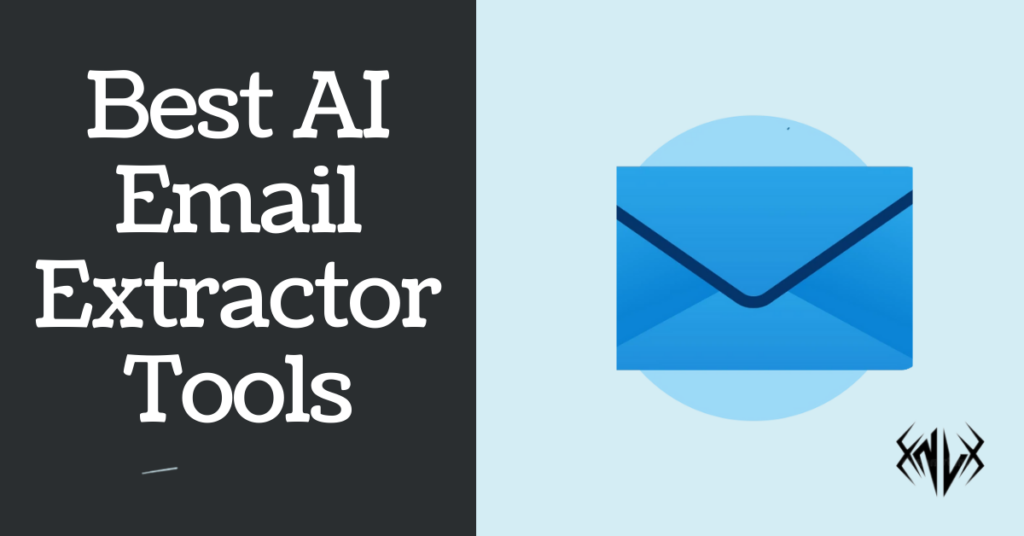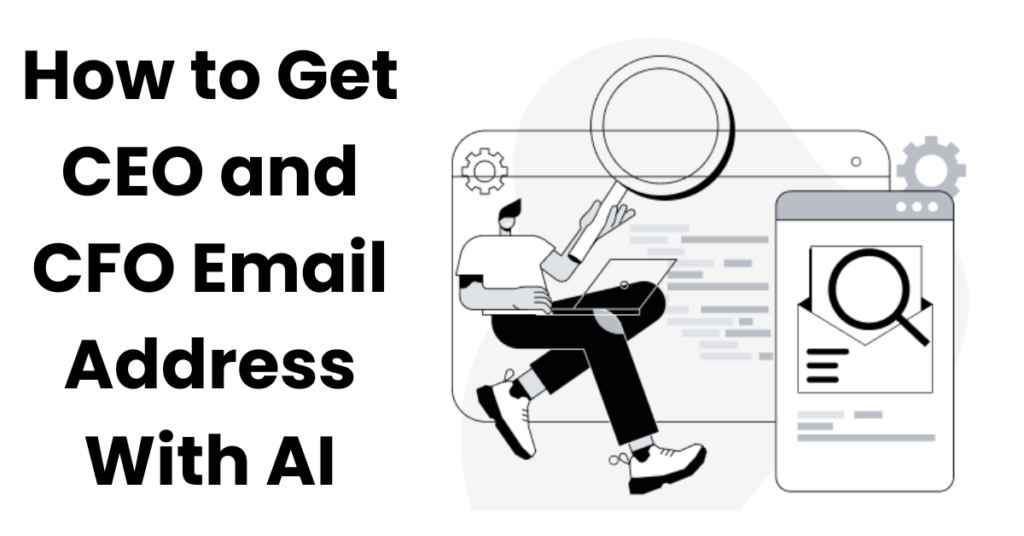Crafting effective cold emails can be a challenging endeavor. As someone deeply invested in enhancing my outreach efforts, I’ve explored various strategies to boost response rates and drive meaningful engagements.
One powerful tool that has significantly transformed my approach is leveraging AI technology to streamline the writing process.
Through the utilization of an AI assistant, I’ve experienced firsthand the efficiency and effectiveness it brings to crafting compelling cold emails.
From expediting the creation of drafts to refining content based on specific prompts, AI has become an invaluable asset in my communication toolkit.
Beyond mere speed, AI also aids in enhancing the structure and grammar of emails, ensuring professionalism and clarity in every message.
This not only saves time but also elevates the quality of communication, making it more likely to resonate with recipients.
In this post, I aim to delve into the intricacies of writing cold emails with AI, offering actionable insights, personal experiences, and proven techniques to help you achieve your outreach objectives.
Whether your goal is to secure meetings, generate leads, or establish fruitful connections, mastering the art of cold email writing with AI is an endeavor worth considering in today’s digital landscape.
Join me as we explore the nuances of leveraging AI technology to craft compelling cold emails that stand out in crowded inboxes, driving tangible results and fostering meaningful engagements.
Let’s embark on this journey together and unlock the potential of AI in revolutionizing your email outreach strategy.
How to Write High-Converting Cold Email with AI
1. Research Your Audience

In the realm of cold email writing, understanding your audience is paramount. Researching your audience involves delving deep into their demographics, preferences, and pain points to tailor your messaging effectively.
For instance, if you’re targeting professionals in the tech industry, understanding their specific challenges and interests will enable you to craft a more relevant and compelling message.
To begin, identify your target audience by defining characteristics such as industry, job title, and company size.
This allows you to narrow down your focus and tailor your message to resonate with a specific group of recipients.
For example, if you’re reaching out to marketing professionals, understanding their unique pain points, such as lead generation or content creation, can inform the content of your email.
Once you’ve identified your target audience, it’s essential to gather relevant information about their needs, preferences, and pain points.
This can be achieved through various means, including online research, surveys, and interviews.
For instance, conducting market research or analyzing customer feedback can provide valuable insights into the challenges and pain points your audience faces.
Moreover, utilize available data to segment your audience based on relevant criteria such as industry, job function, or geographic location.
This allows you to tailor your messaging for different audience segments and increase the relevance and effectiveness of your cold emails.
For example, you may customize your email content based on the specific challenges faced by professionals in different industries or roles.
Furthermore, leverage AI technology to gather and analyze data about your audience more efficiently.
AI tools can help automate the process of collecting and analyzing customer data, allowing you to gain actionable insights quickly and effectively.
For instance, AI-powered analytics platforms can analyze customer behavior patterns to identify common pain points or preferences among your target audience.
Thus, researching your audience is a critical step in crafting effective cold emails.
By identifying your target audience, gathering relevant information, and leveraging AI technology, you can tailor your messaging to resonate with your recipients and increase the likelihood of success in your email outreach efforts.
2. Select an AI Tool
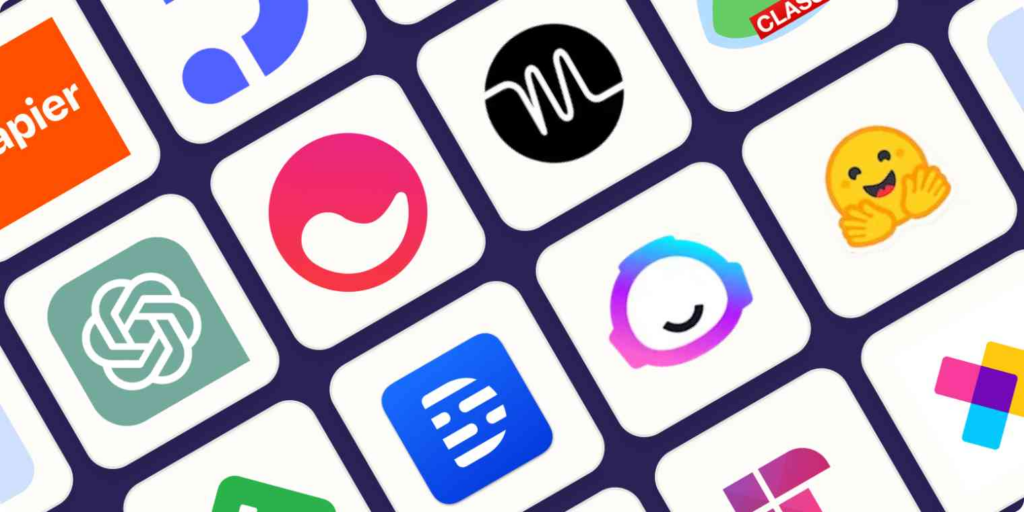
When it comes to incorporating AI into your cold email writing process, selecting the right AI tool is crucial.
Choosing a reputable AI writing tool or platform specialized in generating cold email content can significantly streamline your workflow and enhance the quality of your emails.
These tools are designed to assist users in generating email drafts, suggesting content based on prompts, and optimizing language and tone for maximum impact.
Consider factors such as reliability, accuracy, and user-friendliness when evaluating AI writing tools.
Look for platforms that have a track record of delivering high-quality results and have positive reviews from users.
Additionally, prioritize tools that offer robust features tailored specifically for cold email writing, such as personalized templates, grammar checking, and A/B testing capabilities.
Furthermore, explore the range of features offered by different AI writing tools to ensure they align with your specific needs and objectives.
Some tools may specialize in certain industries or types of content, while others offer more versatility and customization options.
Take advantage of free trials or demos to test out different tools and determine which one best suits your requirements.
Additionally, consider integration capabilities with your existing workflow and tools.
Look for AI writing tools that seamlessly integrate with your email marketing platform, CRM system, or other essential tools to streamline your workflow and ensure compatibility.
Moreover, prioritize data privacy and security when selecting an AI writing tool.
Ensure that the platform complies with relevant data protection regulations and has robust security measures in place to safeguard your sensitive information.
Hence, selecting the right AI tool for cold email writing can have a significant impact on the effectiveness and efficiency of your outreach efforts.
By choosing a reputable platform that specializes in generating cold email content and aligns with your specific needs and objectives, you can leverage AI technology to enhance your email communication and drive better results.
3. Define Your Objectives

When crafting cold emails with the assistance of AI, it’s essential to define your objectives clearly.
Your objectives serve as the guiding light for the content and tone of your email, ensuring that your message resonates with your recipients and drives the desired action.
Whether your goal is to schedule a meeting, pitch a product, or establish a partnership, clarity on your objectives is key to crafting a compelling and focused message.
Consider the specific action you want your recipients to take after reading your email.
For example, if your objective is to schedule a meeting, your email should clearly communicate the purpose of the meeting and provide a clear call-to-action for scheduling.
Similarly, if you’re pitching a product or service, your email should highlight the value proposition and benefits of your offering, compelling recipients to learn more or make a purchase.
Moreover, tailor your messaging to align with your objectives and the needs of your audience.
For instance, if your objective is to establish a partnership, focus on highlighting mutual benefits and opportunities for collaboration.
If your goal is to pitch a product, emphasize how your offering addresses specific pain points or challenges faced by your target audience.
Furthermore, consider the stage of the buyer’s journey your recipients are in when defining your objectives.
Are they at the awareness stage, where they are just learning about your company and offerings? Or are they further along in the decision-making process and ready to take action?
By understanding where your recipients are in their journey, you can tailor your messaging to meet their needs and guide them towards the next steps.
Hence, defining your objectives is a critical step in writing effective cold emails with AI.
By clarifying the purpose of your email and aligning your messaging with your objectives and the needs of your audience, you can create compelling and targeted emails that drive meaningful engagement and achieve your desired outcomes.
4. Craft a Compelling Subject Line
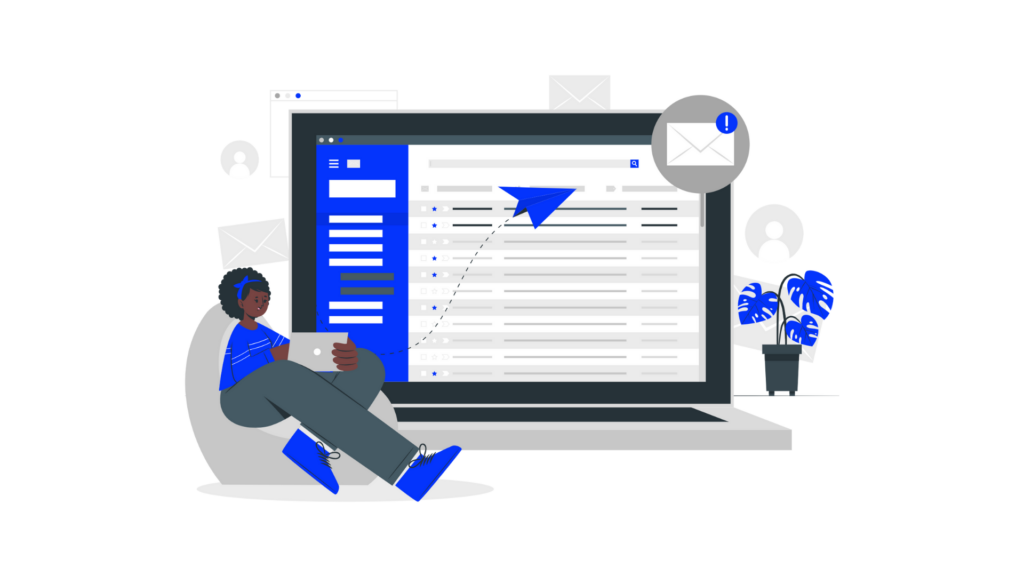
Crafting a compelling subject line is essential when writing cold emails with AI.
The subject line serves as the first point of contact with your recipients and plays a significant role in determining whether your email gets opened or ignored.
To create a subject line that grabs attention and entices recipients to open your email, consider the following key points.
Firstly, keep it concise and to the point. A subject line that is too long or convoluted may get overlooked in crowded inboxes. Aim for clarity and brevity, conveying the essence of your email in a few words.
Secondly, create a sense of urgency or curiosity. Use words or phrases that pique recipients’ interest and compel them to open your email to learn more.
For example, phrases like “Don’t miss out” or “Limited time offer” can create a sense of urgency, while questions or teasers can spark curiosity.
Moreover, personalize the subject line whenever possible. Including the recipient’s name or referencing relevant information can make the email feel more tailored and increase the likelihood of it being opened.
For example, using phrases like “John, a special offer just for you” or “Re: Our conversation at the conference” can grab the recipient’s attention and make them more likely to open the email.
Additionally, test different subject lines to see what resonates best with your audience. A/B testing allows you to experiment with different variations and determine which ones generate the highest open rates.
Pay attention to metrics like open rates and click-through rates to identify which subject lines are most effective.
Thus, crafting a compelling subject line is crucial for the success of your cold email campaigns.
By keeping it concise, creating urgency or curiosity, personalizing when possible, and testing different variations, you can increase the chances of your emails being opened and ultimately drive better results in your outreach efforts.
5. Provide Personalization Inputs
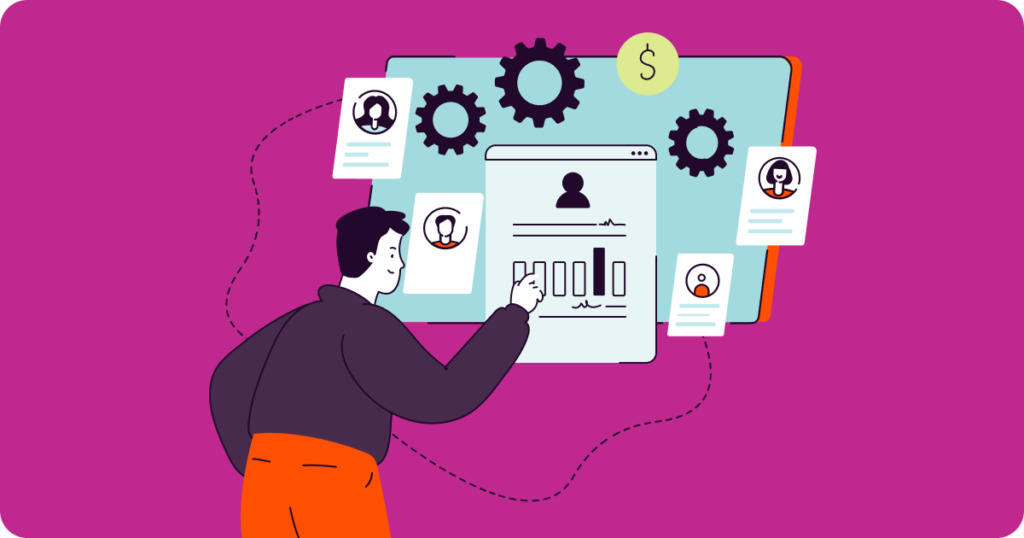
Providing personalized inputs is a crucial step in writing effective cold emails with AI.
By inputting recipient-specific data into the AI tool, such as the recipient’s name, company, or industry, you can tailor your email content to resonate with each individual recipient on a more personal level.
When providing personalization inputs, gather relevant information about your recipients to ensure accuracy and relevance.
This may include their name, job title, company name, industry, past interactions, or any other data points that can help customize your messaging.
For example, instead of using a generic greeting like “Dear Sir/Madam,” you can personalize the email by addressing the recipient by their name, such as “Dear [Recipient’s Name].”
This simple touch can make the email feel more personalized and increase the likelihood of engagement.
Moreover, incorporate relevant details about the recipient’s company or industry into the email content to demonstrate that you’ve done your homework and understand their specific needs or challenges.
For instance, you could reference recent news or developments in their industry, or highlight how your product or service can address a pain point specific to their organization.
Additionally, leverage dynamic content capabilities offered by AI tools to customize the email content based on recipient-specific data.
This allows you to create highly personalized emails at scale, without the need for manual intervention.
Furthermore, continuously update and refine your personalization inputs based on recipient feedback and engagement metrics. Pay attention to which personalized elements resonate most with your audience and adjust your approach accordingly to maximize effectiveness.
In summary, providing personalization inputs is essential for writing compelling cold emails with AI.
By incorporating recipient-specific data into your email content, you can create personalized messages that resonate with each individual recipient, increasing engagement and driving better results in your email outreach efforts.
6. Outline Key Message Points

When writing cold emails with the assistance of AI, outlining key message points is essential for crafting compelling and effective communication.
Outline the key message points you want to convey in your cold email, focusing on addressing the recipient’s needs or offering value.
This involves identifying the core messages or benefits you want to communicate to your audience and structuring your email content around them.
Start by identifying the primary objective of your cold email.
What action do you want the recipient to take after reading your email? Whether it’s scheduling a meeting, requesting more information, or making a purchase, clarity on your objective will help guide the content and tone of your message.
Next, consider the recipient’s perspective and what matters most to them.
What are their pain points, challenges, or goals? Tailor your key message points to address these needs and offer solutions or value propositions that resonate with them.
For example, if you’re reaching out to a potential client, your key message points might focus on how your product or service can solve a specific problem they’re facing or help them achieve their business objectives.
If you’re pitching a partnership, highlight the mutual benefits and opportunities for collaboration.
Moreover, prioritize clarity and conciseness in your messaging. Keep your key message points clear, focused, and easy to understand. Avoid overwhelming the recipient with too much information or irrelevant details.
Additionally, use persuasive language to convey your key message points effectively. Highlight the benefits and value proposition of your offering, and emphasize why the recipient should take action or engage with your email.
Thus, outlining key message points is a critical step in writing cold emails with AI.
By focusing on addressing the recipient’s needs or offering value, and structuring your email content around clear and persuasive messaging, you can increase the effectiveness and impact of your email outreach efforts.
7. Generate Email Content

When it comes to writing cold emails with AI, leveraging the technology to generate email content can be a game-changer.
Using the AI tool to generate the initial draft of your cold email based on the provided inputs and message points streamlines the writing process and ensures consistency and coherence in your messaging.
The AI tool utilizes algorithms and natural language processing capabilities to analyze the input data and generate written content that aligns with your objectives and target audience.
By inputting recipient-specific data, key message points, and other relevant information into the AI tool, you can prompt it to generate a draft email tailored to your needs.
For example, if you provide the AI tool with information about your recipient’s name, company, and industry, along with key message points highlighting the benefits of your product or service, the tool can generate a personalized email draft that addresses the recipient’s needs and offers value.
Moreover, review and refine the generated email content to ensure clarity, relevance, and alignment with your objectives.
While AI can assist in generating the initial draft, human oversight is still necessary to ensure that the content meets your standards and effectively communicates your message.
Additionally, customize the generated content to reflect your brand voice and tone. While AI can help with drafting the content, adding personal touches and injecting your personality into the email can make it feel more authentic and engaging.
Thus, using the AI tool to generate email content is a valuable resource in writing cold emails.
By providing the necessary inputs and message points, you can leverage AI technology to streamline the writing process and create personalized, compelling emails that resonate with your recipients and drive desired outcomes.
8. Customize Language and Tone
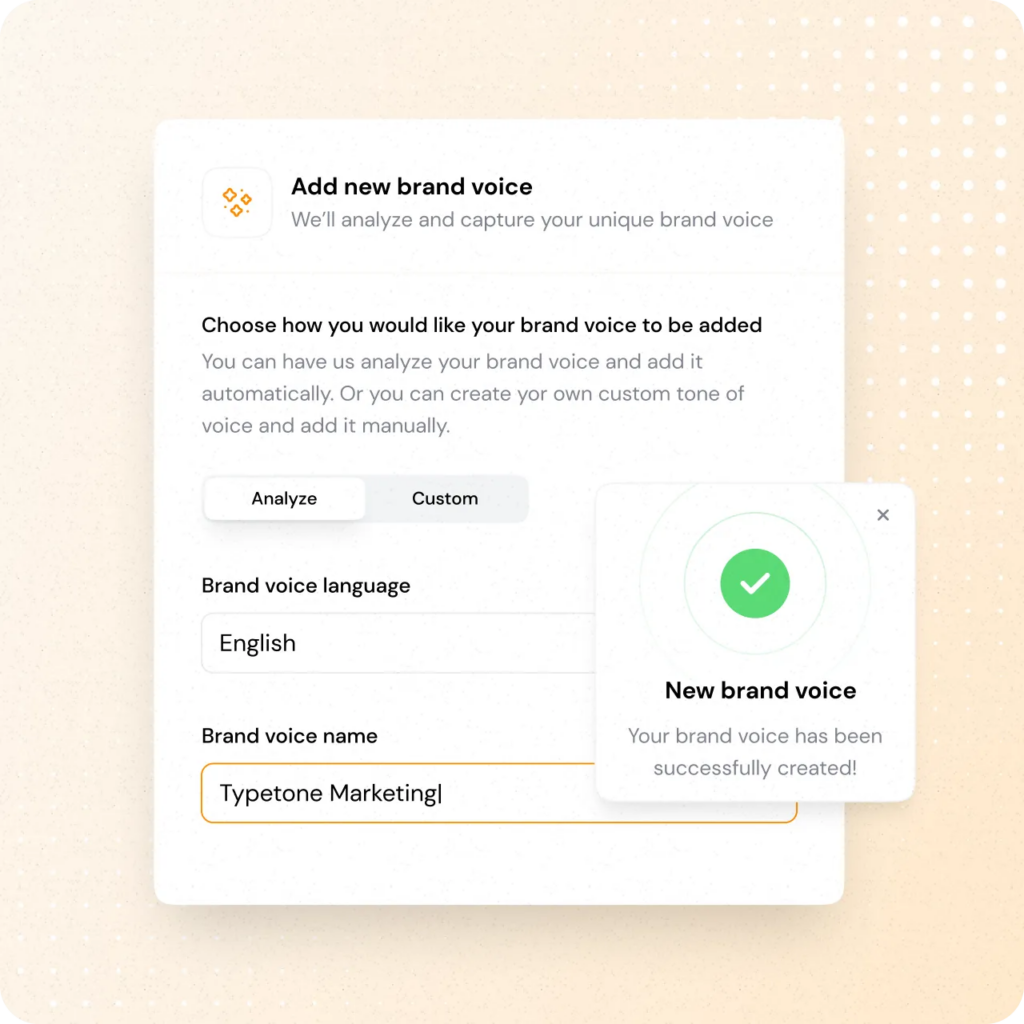
When writing cold emails with AI, customizing the language and tone is crucial for creating a personalized and engaging experience for the recipient.
Customizing the language and tone of the email allows you to tailor your message to resonate with the recipient and reflect your brand voice effectively.
Start by considering the preferences and personality of your target audience. Are they formal or informal in their communication style? Do they respond better to professional language or casual tone? By understanding your audience, you can adapt the language and tone of your email to better connect with them.
For example, if you’re reaching out to a younger demographic or a creative industry, you may opt for a more casual and conversational tone in your email.
On the other hand, if you’re targeting a more traditional or corporate audience, a more formal and professional tone may be more appropriate.
Moreover, reflect your brand voice in the language and tone of your email. Your brand voice is the unique personality and style that defines your brand and sets it apart from competitors.
Ensure that the language and tone of your email align with your brand values and messaging to maintain consistency across all touchpoints.
Additionally, personalize the language and tone based on the relationship you have with the recipient. If you’re reaching out to a new prospect, you may want to keep the language more introductory and professional.
However, if you’re following up with a previous contact or a warm lead, you can adopt a more familiar and friendly tone.
Thus, customizing the language and tone of your cold emails is essential for creating a personalized and authentic communication experience.
By considering the preferences of your audience, reflecting your brand voice, and personalizing the language and tone based on the recipient’s relationship, you can create emails that resonate with your audience and drive engagement.
9. Optimize Call-to-Action

Including a clear and compelling call-to-action (CTA) in your cold email is crucial for prompting recipients to take the desired action.
Optimizing the call-to-action ensures that your email effectively guides recipients towards the next step in the engagement process, whether it’s scheduling a meeting, requesting more information, or visiting a website.
Start by clearly defining the desired action you want recipients to take after reading your email.
Whether it’s clicking a link, filling out a form, or replying to the email, clarity is key to ensuring that recipients understand what is expected of them.
Next, make the CTA stand out in your email. Use formatting techniques such as bolding, color, or a larger font size to draw attention to the CTA and make it easily identifiable.
Additionally, position the CTA prominently within the email, ideally near the end or in a prominent location where it’s easily visible.
Moreover, use persuasive language to compel recipients to take action. Instead of using generic phrases like “Click here” or “Learn more,” use action-oriented language that communicates the benefit or value of taking the desired action.
For example, instead of saying “Click here to schedule a meeting,” you could say “Schedule your free consultation now” to convey the benefit of the action.
Additionally, create a sense of urgency in your CTA to encourage immediate action. Phrases like “Limited time offer” or “Act now to secure your spot” can create a sense of urgency and prompt recipients to take action sooner rather than later.
Furthermore, provide multiple options for taking action if appropriate. For example, if you’re inviting recipients to schedule a meeting, provide multiple time slots or a link to your scheduling tool to accommodate different preferences and schedules.
Thus, optimizing the call-to-action in your cold email is essential for driving engagement and achieving your desired outcomes.
By clearly defining the desired action, making the CTA stand out, using persuasive language, creating a sense of urgency, and providing multiple options for taking action, you can increase the effectiveness of your email outreach efforts.
10. Proofread for Grammar and Spelling
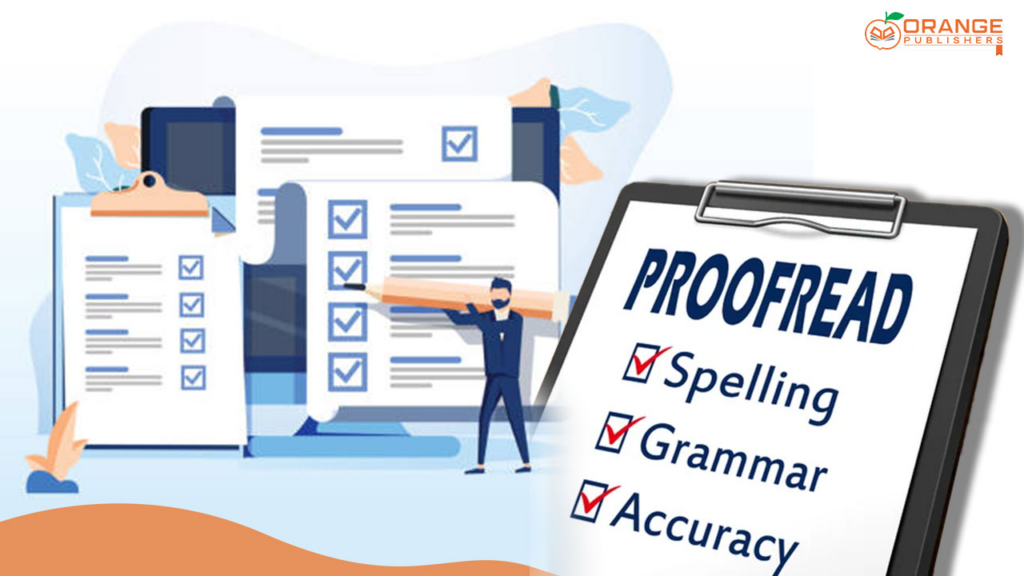
Proofreading your cold email for grammar and spelling errors is a crucial step in maintaining professionalism and credibility.
Proofreading for grammar and spelling ensures that your email communicates your message clearly and effectively, without distractions or misunderstandings.
Start by reading through your email carefully to identify any grammatical or spelling mistakes. Pay attention to common errors such as typos, punctuation errors, and subject-verb agreement issues.
Next, use spelling and grammar check tools provided by your email client or AI writing tool to catch any errors you may have missed.
These tools can help identify potential mistakes and suggest corrections to improve the overall quality of your email.
Moreover, consider seeking feedback from a colleague or trusted friend. A fresh pair of eyes can often spot errors that you may have overlooked.
Additionally, they can provide valuable insights and suggestions for improving the clarity and effectiveness of your email.
Additionally, take your time when proofreading your email. Rushing through the process can increase the likelihood of missing errors.
Set aside dedicated time to carefully review and edit your email before sending it out.
Furthermore, pay attention to formatting as well. Ensure that your email is well-structured and easy to read, with clear paragraphs, bullet points, and headings.
Consistent formatting enhances readability and professionalism.
In summary, proofreading your cold email for grammar and spelling errors is essential for maintaining professionalism and credibility.
By carefully reviewing your email, using spelling and grammar check tools, seeking feedback, taking your time, and paying attention to formatting, you can ensure that your email communicates your message effectively and leaves a positive impression on your recipients.
11. Test Email Formatting

Testing the email formatting across different devices and email clients is essential to ensure that your cold email displays optimally and is easily readable by your recipients.
Testing email formatting involves checking how your email appears on various devices such as desktop computers, laptops, tablets, and smartphones, as well as different email clients like Gmail, Outlook, and Apple Mail.
Start by sending test emails to yourself or colleagues and opening them on different devices and email clients.
Pay attention to how the email renders and ensure that all elements, including text, images, and formatting, display correctly and are not distorted or cut off.
Next, evaluate the readability of your email on different devices and screen sizes. Ensure that the text is legible and that recipients can easily scroll through the email without encountering any formatting issues.
Moreover, test interactive elements such as hyperlinks and buttons to ensure they function as intended. Click on links and buttons to verify that they lead to the correct destination and that recipients can easily navigate through the email.
Additionally, check for responsive design to ensure that your email adapts seamlessly to different screen sizes and orientations.
Responsive design is essential for providing a consistent user experience across devices and ensuring that your email is accessible to all recipients.
Furthermore, make adjustments as needed based on the results of your testing. If you encounter any formatting issues or inconsistencies, troubleshoot and make changes to your email template or formatting settings to address them.
Therefore, testing email formatting across different devices and email clients is a critical step in ensuring that your cold email reaches your recipients in the intended format and is easily readable and accessible.
By sending test emails, evaluating readability, testing interactive elements, checking for responsive design, and making adjustments as needed, you can optimize the display and readability of your cold email and enhance its effectiveness in reaching and engaging your audience.
12. Incorporate Visual Elements

Incorporating visual elements into your cold email can significantly enhance its visual appeal and effectiveness.
Consider incorporating relevant visual elements, such as images or graphics, to capture the recipient’s attention and convey information more effectively.
Start by selecting visual elements that align with the content and purpose of your email. Choose images or graphics that are relevant to your message and help reinforce key points or concepts.
For example, if you’re promoting a new product, include high-quality images or product shots to showcase its features and benefits.
Next, ensure that visual elements enhance readability rather than detract from it. Avoid using overly complex or distracting images that may overwhelm the recipient or detract from the main message of your email.
Instead, opt for clean, simple visuals that complement your content and enhance the overall aesthetic appeal of the email.
Moreover, optimize visual elements for mobile devices to ensure that they display properly and do not slow down load times.
Consider the size and resolution of images to minimize file size and ensure fast loading, particularly on mobile devices where bandwidth may be limited.
Additionally, strategically place visual elements throughout the email to guide the recipient’s eye and draw attention to key points or calls-to-action.
For example, place images or graphics near important sections of text to reinforce the message and break up the visual monotony of the email.
Furthermore, test visual elements across different devices and email clients to ensure compatibility and optimal display.
Preview your email on desktop computers, laptops, tablets, and smartphones to verify that visual elements render correctly and enhance the overall user experience.
Thus, incorporating visual elements into your cold email can significantly enhance its visual appeal and effectiveness.
By selecting relevant visual elements, ensuring readability, optimizing for mobile devices, strategically placing visuals, and testing across different devices and email clients, you can create visually compelling emails that capture attention and engage your audience effectively.
13. Add Personal Touches

Adding personal touches to your cold email can significantly enhance its effectiveness and help you build rapport with the recipient.
Adding personal touches involves incorporating elements that demonstrate your familiarity with the recipient and make the email feel more tailored and authentic.
Start by referencing shared connections or mutual acquaintances in your email. If you have a shared connection with the recipient, mention it in your email to establish a sense of familiarity and trust.
For example, you could say, “I noticed that we have a mutual connection in John Smith, who recommended that I reach out to you.”
Next, acknowledge any previous interactions you’ve had with the recipient. If you’ve met them at an event or conference, or if you’ve exchanged emails in the past, reference these interactions to show that you’ve done your homework and value the relationship.
For example, you could say, “It was great meeting you at the conference last week. I enjoyed our conversation about [topic], and I wanted to follow up with some additional information.”
Moreover, personalize the content of your email based on information you’ve gathered about the recipient.
Mention specific details about their company, industry, or interests to demonstrate that you’ve taken the time to research and understand their needs.
For example, you could say, “I noticed that your company recently launched a new product line, and I believe that our services could help you reach your sales goals.”
Additionally, use conversational language and a friendly tone to make the email feel more personal and approachable.
Avoid overly formal or robotic language, and instead, write in a way that feels natural and genuine.
Furthermore, focus on building a relationship rather than immediately pushing for a sale or commitment.
Use the personal touches in your email to start a conversation and establish a connection with the recipient, laying the foundation for future interactions.
Therefore, adding personal touches to your cold email can help you stand out from the crowd and build meaningful relationships with your recipients.
By referencing shared connections, acknowledging previous interactions, personalizing the content, using conversational language, and focusing on relationship-building, you can create emails that resonate with your audience and drive engagement effectively.
14. Preview and Preview Email
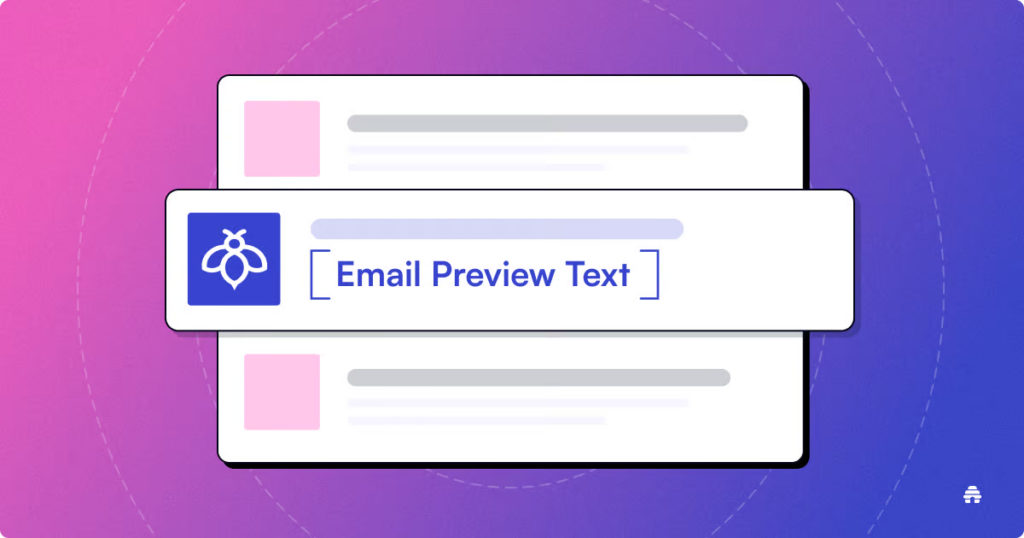
Previewing the final email before sending is a crucial step to ensure that all elements are in place and accurately reflect your intended message.
Previewing and reviewing the email allows you to catch any errors or inconsistencies and make any necessary adjustments before sending it out to your recipients.
Start by reviewing the email content to ensure that it aligns with your objectives and effectively communicates your message.
Check for any typos, grammatical errors, or awkward phrasing that may detract from the professionalism of your email.
Next, double-check all links and attachments to ensure that they are working properly and lead to the intended destination.
Test any hyperlinks to verify that they direct recipients to the correct landing page or resource, and ensure that any attachments are properly formatted and easily accessible.
Moreover, pay attention to email formatting to ensure that the email displays correctly and is visually appealing on different devices and email clients.
Check that all visual elements, such as images or graphics, render properly and enhance the overall aesthetic of the email.
Additionally, verify the accuracy of recipient information to ensure that you are sending the email to the correct individual or group.
Check the recipient’s name, email address, and any other relevant details to avoid any embarrassing mistakes or miscommunications.
Furthermore, preview the email in different email clients to ensure compatibility and optimal display.
Open the email in popular email clients such as Gmail, Outlook, and Apple Mail to verify that it looks consistent and professional across different platforms.
Thus, previewing the final email is essential for ensuring that it accurately reflects your intended message and maintains a professional appearance.
By reviewing the email content, double-checking links and attachments, paying attention to formatting, verifying recipient information, and previewing in different email clients, you can confidently send out your cold email knowing that it is polished and ready for delivery.
15. Segment Recipients

Segmenting your email list based on relevant criteria is a strategic approach to tailor your messaging and increase the effectiveness of your cold email campaigns.
Segmenting recipients involves dividing your email list into distinct groups based on specific characteristics or behaviors, such as industry, job role, or past interactions with your brand.
Start by identifying relevant segmentation criteria that align with your business objectives and target audience. Consider factors such as industry verticals, company size, geographic location, or level of engagement with your brand.
Next, divide your email list into segments based on the identified criteria. This allows you to create targeted and personalized messaging that resonates with each audience segment.
For example, you may create separate segments for healthcare professionals, marketing professionals, and IT professionals, each receiving tailored content that addresses their unique needs and challenges.
Moreover, customize your messaging for each audience segment to ensure relevance and engagement. Adapt your email content, subject lines, and calls-to-action to speak directly to the interests and pain points of each segment.
For instance, you might highlight industry-specific case studies, testimonials, or product features that are most relevant to each group.
Additionally, leverage AI technology to automate the segmentation process and personalize your email content at scale.
AI tools can analyze data points and user behavior to identify patterns and preferences, allowing you to deliver targeted messages to the right audience segments at the right time.
Furthermore, track and analyze the performance of your segmented email campaigns to measure effectiveness and refine your segmentation strategy over time.
Monitor metrics such as open rates, click-through rates, and conversion rates for each segment to identify areas for improvement and optimization.
Thus, segmenting your email list based on relevant criteria is a strategic approach to tailor your messaging and increase engagement with your cold email campaigns.
By identifying segmentation criteria, dividing your email list into segments, customizing your messaging, leveraging AI technology, and tracking performance metrics, you can create more targeted and effective cold email campaigns that drive results.
16. Schedule Send Time

Choosing the right send time for your cold email is crucial to increase the likelihood of recipients opening and responding to your message.
Scheduling the send time involves strategically selecting the time and day when your email is most likely to capture the attention of your audience and prompt action.
Begin by understanding recipient behavior to identify patterns in their email engagement. Analyze data from past campaigns to determine when your audience is most active and responsive to email communication.
For instance, you may find that your audience tends to check their emails first thing in the morning or during lunch breaks.
Next, consider recipient preferences when selecting the send time for your cold email. Take into account factors such as time zone differences and the nature of your recipients’ work schedules.
Aim to send emails at times when recipients are likely to be available and receptive to receiving new messages.
Moreover, test different send times to see which yields the best results for your audience. Experiment with sending emails at various times of the day and days of the week to identify peak engagement periods.
Use A/B testing to compare the performance of emails sent at different times and refine your send time strategy accordingly.
Additionally, leverage AI technology to optimize your send time based on recipient behavior and preferences.
AI tools can analyze data and identify the optimal times to send emails to maximize open and response rates.
Utilize AI-driven insights to schedule emails for when they are most likely to resonate with your audience.
Furthermore, monitor and analyze performance metrics to assess the effectiveness of your chosen send times.
Track metrics such as open rates, click-through rates, and response rates to evaluate the impact of your send time strategy and make adjustments as needed.
Scheduling the send time for your cold email is a strategic decision that can significantly impact its success.
By understanding recipient behavior, considering preferences, testing different send times, leveraging AI technology, and monitoring performance metrics, you can optimize your send time strategy and increase the effectiveness of your cold email campaigns.
17. Follow-Up Strategy
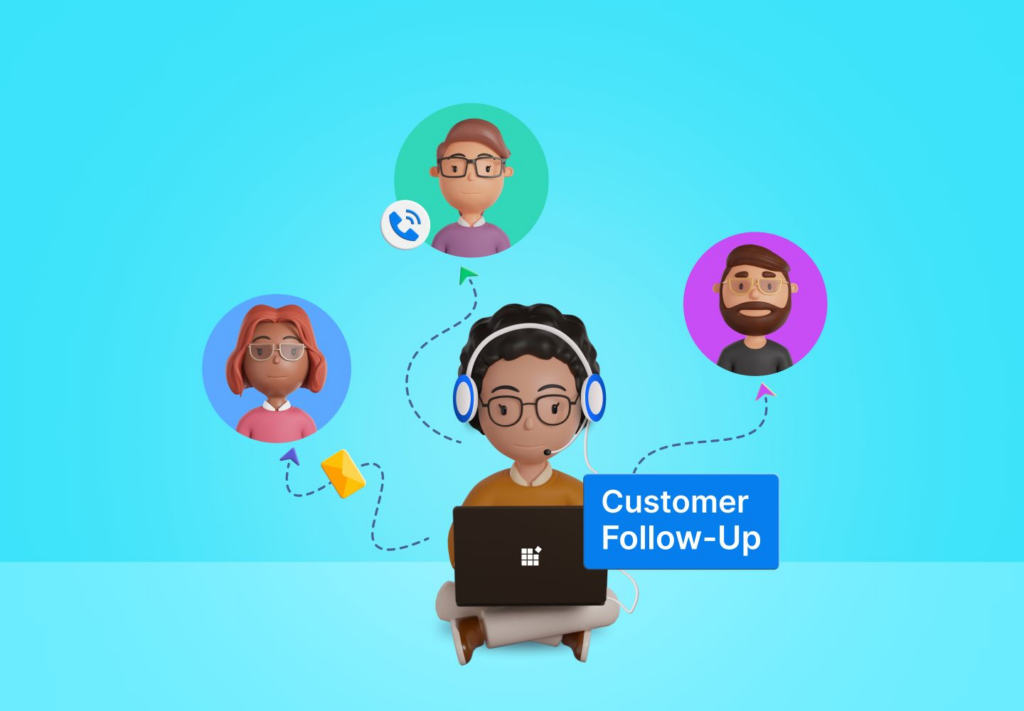
Developing a follow-up strategy is essential for nurturing leads and maintaining engagement with recipients who haven’t responded to your initial cold email.
Creating a follow-up strategy involves planning a series of follow-up emails to re-engage with recipients and move them further along the sales or conversion funnel.
Start by setting a follow-up schedule to determine when and how often you will send follow-up emails.
Consider factors such as the urgency of the message, the length of your sales cycle, and the recipient’s level of engagement to determine the appropriate timing for each follow-up.
Next, personalize your follow-up emails to address any concerns or objections that may have prevented the recipient from responding to your initial email.
Acknowledge their lack of response and offer additional value or information that may pique their interest and encourage them to engage with your email.
Moreover, vary your messaging in each follow-up email to keep the conversation fresh and relevant.
Avoid sending the same generic follow-up message repeatedly, as this can come across as spammy and may deter recipients from engaging with your emails.
Additionally, leverage automation tools to streamline the follow-up process and ensure timely delivery of your follow-up emails.
Use email automation software to schedule follow-up emails in advance and track recipient engagement to determine the effectiveness of your follow-up strategy.
Furthermore, track and analyze the results of your follow-up emails to identify areas for improvement and optimization.
Monitor metrics such as open rates, click-through rates, and response rates to gauge the effectiveness of your follow-up strategy and make adjustments as needed.
Thus, developing a follow-up strategy is essential for nurturing leads and maintaining engagement with recipients who haven’t responded to your initial cold email.
By setting a follow-up schedule, personalizing your follow-up emails, varying your messaging, leveraging automation tools, and tracking results, you can increase the effectiveness of your follow-up efforts and improve overall engagement with your audience.
18. Track and Analyze Performance

Tracking and analyzing the performance of your cold email campaigns is essential for understanding their effectiveness and making data-driven improvements.
Tracking and analyzing performance involves monitoring key metrics such as open rates, click-through rates, and response rates to gain insights into recipient engagement and campaign success.
Begin by setting up tracking mechanisms to monitor the performance of your cold email campaigns.
Most email marketing platforms provide built-in analytics tools that allow you to track metrics like open rates, click-through rates, and bounce rates.
Use these tools to gain visibility into how recipients are interacting with your emails.
Next, analyze the data to identify trends and patterns in recipient behavior.
Look for correlations between email content, subject lines, send times, and engagement metrics to determine what elements are resonating with your audience and driving results.
For example, you may notice that emails with personalized subject lines have higher open rates compared to generic subject lines.
Moreover, segment your data to gain deeper insights into different audience segments and their response to your emails.
Analyze performance metrics for specific segments based on criteria such as industry, job role, or geographic location to tailor your messaging and targeting strategies accordingly.
Additionally, benchmark your performance against industry standards to gauge how your cold email campaigns compare to others in your sector.
Use industry benchmarks to set realistic goals and track your progress over time, striving to improve performance metrics with each campaign iteration.
Furthermore, iterate and optimize your cold email campaigns based on the insights gained from tracking and analysis.
Experiment with different email elements, such as subject lines, messaging, and CTAs, to see what resonates best with your audience and drives the highest engagement.
Hence, tracking and analyzing the performance of your cold email campaigns is crucial for optimizing your efforts and maximizing results.
By monitoring key metrics, analyzing recipient behavior, segmenting data, benchmarking against industry standards, and iterating on your approach, you can continuously improve the effectiveness of your cold email campaigns and drive better outcomes for your business.
19. Iterate and Refine

Continuously iterating and refining your cold email writing process is essential for staying ahead in the ever-evolving landscape of email marketing.
Iterating and refining involves reviewing performance metrics, gathering recipient feedback, and making strategic adjustments to optimize future campaigns.
Start by analyzing performance metrics from past email campaigns to identify areas for improvement.
Look closely at metrics such as open rates, click-through rates, and response rates to pinpoint which aspects of your emails are resonating with recipients and which ones may need refinement.
Next, gather feedback from recipients to gain insights into their preferences and pain points.
Consider sending surveys or follow-up emails asking recipients for their thoughts on your email content, messaging, and overall experience.
Pay attention to recurring themes or suggestions that can help inform your future email writing efforts.
Moreover, experiment with different approaches to see what yields the best results.
Test variations in subject lines, email content, calls-to-action, and send times to determine which combinations lead to the highest levels of engagement and conversions.
Keep track of your experiments and use the data to inform your decision-making process moving forward.
Additionally, stay informed about industry trends and best practices in email marketing.
Keep an eye on changes in consumer behavior, technological advancements, and regulatory requirements that may impact how you approach cold email writing.
Adapt your strategies accordingly to stay relevant and effective in your outreach efforts.
Furthermore, encourage a culture of continuous improvement within your organization or team.
Share insights and learnings from past campaigns, and collaborate on brainstorming new ideas and strategies for future campaigns. Foster an environment where feedback is valued and used to drive positive change.
Thus, iterating and refining your cold email writing process is a dynamic and ongoing endeavor.
By analyzing performance metrics, gathering recipient feedback, experimenting with different approaches, staying informed about industry trends, and fostering a culture of continuous improvement, you can optimize your email campaigns and achieve better results over time.
Final Thoughts
In wrapping up, mastering cold email writing with AI is a game-changer. It’s about understanding your audience, crafting compelling messages, and using technology smartly.
As I reflect on this journey, I realize it’s a delicate balance of innovation and personalization.
By digging into recipient behavior, we uncover valuable insights guiding our decisions. With AI, we navigate this landscape, leveraging its power to enhance our communication.
As we embark on this journey, let’s blend technology with a human touch, crafting experiences that resonate.
In essence, cold email writing with AI is about more than just sending messages; it’s about creating connections that last.
Together, armed with AI and a deep understanding of our audience, we step into a future where each email holds endless possibilities.
